#Carbonated Plant
Explore tagged Tumblr posts
Text
Masterpost: Reasons I firmly believe we will beat climate change
Posts are in reverse chronological order (by post date, not article date), mostly taken from my "climate change" tag, which I went through all the way back to the literal beginning of my blog. Will update periodically.
Especially big deal articles/posts are in bold.
Big picture:
Mature trees offer hope in world of rising emissions (x)
Spying from space: How satellites can help identify and rein in a potent climate pollutant (x)
Good news: Tiny urban green spaces can cool cities and save lives (x)
Conservation and economic development go hand in hand, more often than expected (x)
The exponential growth of solar power will change the world (x)
Sun Machines: Solar, an energy that gets cheaper and cheaper, is going to be huge (x)
Wealthy nations finally deliver promised climate aid, as calls for more equitable funding for poor countries grow (x)
For Earth Day 2024, experts are spreading optimism – not doom. Here's why. (x)
Opinion: I’m a Climate Scientist. I’m Not Screaming Into the Void Anymore. (x)
The World’s Forests Are Doing Much Better Than We Think (x)
‘Staggering’ green growth gives hope for 1.5C, says global energy chief (x)
Beyond Catastrophe: A New Climate Reality Is Coming Into View (x)
Young Forests Capture Carbon Quicker than Previously Thought (x)
Yes, climate change can be beaten by 2050. Here's how. (x)
Soil improvements could keep planet within 1.5C heating target, research shows (x)
The global treaty to save the ozone layer has also slowed Arctic ice melt (x)
The doomers are wrong about humanity’s future — and its past (x)
Scientists Find Methane is Actually Offsetting 30% of its Own Heating Effect on Planet (x)
Are debt-for-climate swaps finally taking off? (x)
High seas treaty: historic deal to protect international waters finally reached at UN (x)
How Could Positive ‘Tipping Points’ Accelerate Climate Action? (x)
Specific examples:
Environmental Campaigners Celebrate As Labour Ends Tory Ban On New Onshore Wind Projects (x)
Private firms are driving a revolution in solar power in Africa (x)
How the small Pacific island nation of Vanuatu drastically cut plastic pollution (x)
Rewilding sites have seen 400% increase in jobs since 2008, research finds [Scotland] (x)
The American Climate Corps take flight, with most jobs based in the West (x)
Waste Heat Generated from Electronics to Warm Finnish City in Winter Thanks to Groundbreaking Thermal Energy Project (x)
Climate protection is now a human right — and lawsuits will follow [European Union] (x)
A new EU ecocide law ‘marks the end of impunity for environmental criminals’ (x)
Solar hits a renewable energy milestone not seen since WWII [United States] (x)
These are the climate grannies. They’ll do whatever it takes to protect their grandchildren. [United States and Native American Nations] (x)
Century of Tree Planting Stalls the Warming Effects in the Eastern United States, Says Study (x)
Chart: Wind and solar are closing in on fossil fuels in the EU (x)
UK use of gas and coal for electricity at lowest since 1957, figures show (x)
Countries That Generate 100% Renewable Energy Electricity (x)
Indigenous advocacy leads to largest dam removal project in US history [United States and Native American Nations] (x)
India’s clean energy transition is rapidly underway, benefiting the entire world (x)
China is set to shatter its wind and solar target five years early, new report finds (x)
‘Game changing’: spate of US lawsuits calls big oil to account for climate crisis (x)
Largest-ever data set collection shows how coral reefs can survive climate change (x)
The Biggest Climate Bill of Your Life - But What Does It DO? [United States] (x)
Good Climate News: Headline Roundup April 1st through April 15th, 2023 (x)
How agroforestry can restore degraded lands and provide income in the Amazon (x) [Brazil]
Loss of Climate-Crucial Mangrove Forests Has Slowed to Near-Negligable Amount Worldwide, Report Hails (x)
Agroecology schools help communities restore degraded land in Guatemala (x)
Climate adaptation:
Solar-powered generators pull clean drinking water 'from thin air,' aiding communities in need: 'It transforms lives' (x)
‘Sponge’ Cities Combat Urban Flooding by Letting Nature Do the Work [China] (x)
Indian Engineers Tackle Water Shortages with Star Wars Tech in Kerala (x)
A green roof or rooftop solar? You can combine them in a biosolar roof — boosting both biodiversity and power output (x)
Global death tolls from natural disasters have actually plummeted over the last century (x)
Los Angeles Just Proved How Spongy a City Can Be (x)
This city turns sewage into drinking water in 24 hours. The concept is catching on [Namibia] (x)
Plants teach their offspring how to adapt to climate change, scientists find (x)
Resurrecting Climate-Resilient Rice in India (x)
Edit 1/12/25: Yes, I know a bunch of the links disappeared. I'll try to fix that when I get the chance. In the meantime, read all the other stuff!!
Other Masterposts:
Going carbon negative and how we're going to fix global heating (x)
#climate change#climate crisis#climate action#climate emergency#climate anxiety#climate solutions#fossil fuels#pollution#carbon emissions#solar power#wind power#trees#forests#tree planting#biodiversity#natural disasters#renewables#renewable electricity#united states#china#india#indigenous nations#european union#plant biology#brazil#uk#vanuatu#scotland#england#methane
2K notes
·
View notes
Text
Always wild to see how much of plants is roots
Especially grassland plants
Like, look at this guy

One true leaf and less than a centimeter tall, and already a 21cm taproot
That's hella carbon sequestration! Once mature these guys make enormous perennial taproots, and that carbon isn't going anywhere soon
2K notes
·
View notes
Text
The Future of Carbonated Beverages: Trends and Innovations in the Industry
In this blog post, we will explore the future of carbonated beverages, highlighting the emerging trends and innovative developments that are reshaping the industry. As a Leading Carbonated Beverages Manufacturers, Maruti Machines Pvt. Ltd. has a wide variety of products including an Energy Drink Plant, Pure Mineral Water Bottling Plant Machine, Soft Drink Packaging Plant, Fruit Juice Plant, Plastic Water Bottle Filling Machine, etc. If you are also looking for carbonated beverage plants, Feel free to contact us, our experts are here to serve you. visit:
0 notes
Text

Stomata: tiny openings allow plants to exchange gases with their outside environment
#plant#biology#photography#explore#nature#science#adorable#education#lol#amazing#awesome#funny#floral#flores#original photographers#original photography#art#photooftheday#artoftheday#naturephotography#nature lovers#leaf#plant mouth#carbon dioxide#oxygen#stoma#stomate#stomata#pore#leaves
164 notes
·
View notes
Text

#good news#environmentalism#science#carbon capture#carbon sinks#wood#tulip trees#trees#environment#nature#climate change#climate crisis#carbon storage#plants#botany#biology
103 notes
·
View notes
Text
The latest video from "Crime Pays Botany Doesn't" is all about how grasslands fix carbon and the impressive root systems of perennial wild plants.
If you don't watch CPBD you should, it's your one stop show for all the botany you need to know!
youtube
#crime pays but botany doesn't#plants#grass#grasslands#lawns#no lawns#lawns suck#carbon fixing#climate change#botany#videos#Youtube
138 notes
·
View notes
Text
coldplay gained all of my respect after reading this post on reddit (as in, i will definitely start following them on social media so i can see things for myself and i will listen to their music without feeling embarrassed about it - viva la vida has always been a banger, i'm a bit uncomfortable with things like princess of china and some collabs - but i probably will never see them live or buy their albums...)
#music#anti taylor swift#anti swifties#pop music#billionaires#environment#carbon neutral#coldplay#chris martin#carbon footprint#global warming#global heating#music industry#music plants#privilege
19 notes
·
View notes
Text

I'm at the combination Jamba Juice and therapist
#i am a slumpy plant and i need carbonated water#gif#foldmorepaper#wordart#xara3dmaker#transparent#bandcamp#word art#alternative music#cheekface#text gif#font: prohibition#song: i feel so weird!#album: too much to ask#artist: cheekface#cheekfreak#cheek freak#Bandcamp
13 notes
·
View notes
Note
Just wanted to thank you for taking the time and effort to put together the long climate/environment post, especially the online resources. I've wanted to replace the neglected/dead non-native plants at my place with native plants for months, but didn't know where to start my search for species except to walk around my local nature preserve trying to find something that isn't invasive lol. I'll be able to start (re)introducing native plants this month because of you :-)
Thank you for the kind words. I'm glad the post has been helpful and inspiring. If you'd like more directed guidance on native plants, I can probably point you in the right direction if you can give me a general area to work with (state would suffice!). In general, go for keystone species- those that are common in your area and support many kinds of insects- or pollinator favorites, or host plants for rare/imperiled butterflies/bees/moths.
#glad I could help :)#unfortunately I think too many people forget that helping the environment is much more than recycling or taking public transit#the most direct tangible difference comes from preserving habitat#because that's where ecosystem services come from - clean air and water and carbon sequestration and fish/game habitat#and much more. we need biodiversity and functioning ecosystems to be able to cope with climate change. if habitat is lost and#fragmented then local populations of plants and animals will struggle to persist#they need to be able to move through the landscape safely. to migrate and shift their ranges and find food#they need to maintain gene flow and a source of new individuals to keep populations alive#habitat fragmentation is as insidious a threat as habitat loss. every time a new housing development is built we chop up the land more#but it's easy to restore those stepping stones#and the effects are measurable. you'd be surprised how many species including rare ones can show up in these little patches#because a corridor can support many more species than each patch alone. connection trumps isolation. connection saves us.#the earth is a living breathing thing. the soil is alive the water is alive. this entire biosphere coevolved together. we can't break it up
11 notes
·
View notes
Text
More than 200 chemical plants in the U.S. will be required to reduce toxic emissions that are likely to cause cancer under a new rule issued Tuesday by the Environmental Protection Agency (EPA). The rule advances President Joe Biden's commitment to environmental justice by delivering critical health protections for communities burdened by industrial pollution from ethylene oxide, chloroprene and other dangerous chemicals, officials said. Areas that will benefit from the new rule include majority-Black neighbourhoods outside New Orleans that EPA administrator Michael Regan visited as part of his 2021 Journey to Justice tour.
Continue Reading
15 notes
·
View notes
Text
1,300 Kenyan Farmers Graduate After Four Years of First-of-its-Kind Sustainable Agroforestry and Climate Action Training Program
Discover how over 1,300 farmers in Homa Bay, Kenya, are transforming their livelihoods and restoring the environment through Trees for the Future’s Forest Garden Program, a sustainable agroforestry initiative. Learn how agroforestry techniques like composting, crop rotation, and tree planting are empowering farmers in Kenya to combat climate change, increase food security, and boost…
#agroforestry in Kenya#agroforestry income generation#agroforestry projects#biodiversity conservation#biodiversity enhancement#carbon offset projects#carbon sequestration#climate change Solutions#composting techniques#crop rotation#crop yields#deforestation reversal#entrepreneurial farming#environmental sustainability#farmer training#farmer-to-farmer learning#Food security#Forest Garden Program#green jobs in agriculture.#Homa Bay agroforestry#integrated pest management#reforestation#smallholder farmers#soil carbon improvements#soil restoration#Sustainable agroforestry#sustainable farming practices#tree biomass#tree planting#women in agriculture
8 notes
·
View notes
Text
"Marginal improvements to agricultural soils around the world would store enough carbon to keep the world within 1.5C of global heating, new research suggests.
Farming techniques that improve long-term fertility and yields can also help to store more carbon in soils but are often ignored in favor of intensive techniques using large amounts of artificial fertilizer, much of it wasted, that can increase greenhouse gas emissions.
Using better farming techniques to store 1 percent more carbon in about half of the world’s agricultural soils would be enough to absorb about 31 gigatons of carbon dioxide a year, according to new data. That amount is not far off the 32 gigaton gap between current planned emissions reduction globally per year and the amount of carbon that must be cut by 2030 to stay within 1.5C.
The estimates were carried out by Jacqueline McGlade, the former chief scientist at the UN environment program and former executive director of the European Environment Agency. She found that storing more carbon in the top 30 centimeters of agricultural soils would be feasible in many regions where soils are currently degraded.
McGlade now leads a commercial organization that sells soil data to farmers. Downforce Technologies uses publicly available global data, satellite images, and lidar to assess in detail how much carbon is stored in soils, which can now be done down to the level of individual fields.
“Outside the farming sector, people do not understand how important soils are to the climate,” said McGlade. “Changing farming could make soils carbon negative, making them absorb carbon, and reducing the cost of farming.”
She said farmers could face a short-term cost while they changed their methods, away from the overuse of artificial fertilizer, but after a transition period of two to three years their yields would improve and their soils would be much healthier...
Arable farmers could sequester more carbon within their soils by changing their crop rotation, planting cover crops such as clover, or using direct drilling, which allows crops to be planted without the need for ploughing. Livestock farmers could improve their soils by growing more native grasses.
Hedgerows also help to sequester carbon in the soil, because they have large underground networks of mycorrhizal fungi and microbes that can extend meters into the field. Farmers have spent decades removing hedgerows to make intensive farming easier, but restoring them, and maintaining existing hedgerows, would improve biodiversity, reduce the erosion of topsoil, and help to stop harmful agricultural runoff, which is a key polluter of rivers."
-via The Grist, July 8, 2023
#agriculture#sustainable agriculture#sustainability#carbon emissions#carbon sequestration#livestock#farming#regenerative farming#native plants#ecosystems#global warming#climate change#good news#hope
4K notes
·
View notes
Text
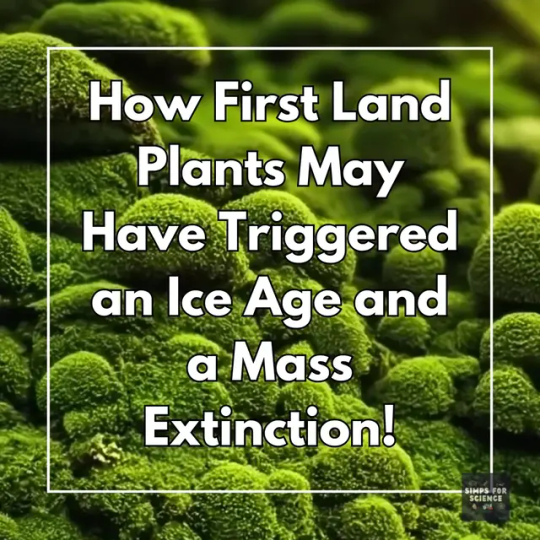
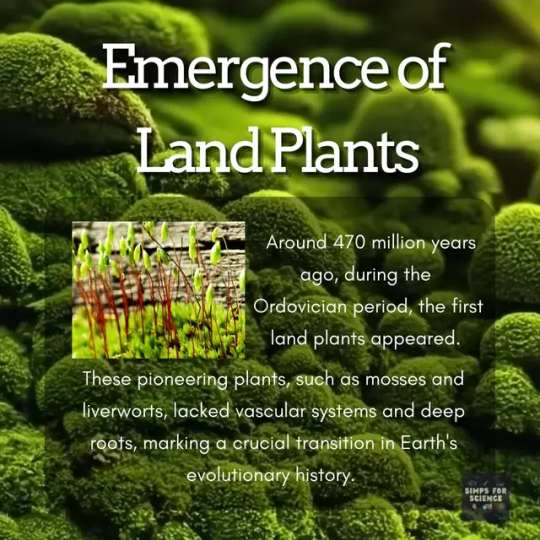

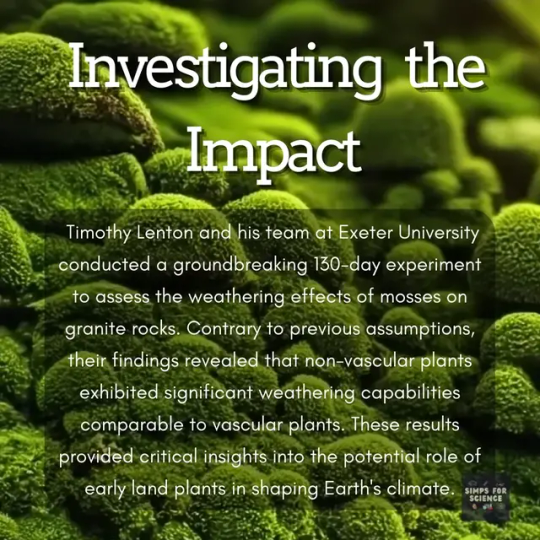
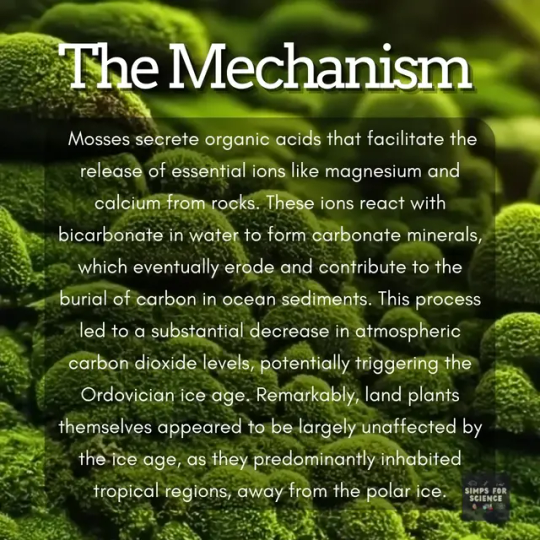

Tiny land pioneers 🌱 might have had a BIG impact on Earth's climate millions of years. Go through this post to learn more!
Image sources:
Background - Craiyon
Land plants - Marilylle Soveran/Flickr
#ordovician#evolution#paleo#paleobiology#paleoblr#paleobotany#botany#plantblr#plants#ice age#mass extinction#paleontology#carbon#carbon dioxide#geology#science#science facts#education#discover#study blog#studyblr#biology#biology student#biology facts#scicomm#explore#research scientist#earth#cool science#simps for science
16 notes
·
View notes
Text
The Importance of Quality Control in Carbonated Soda Plant Manufacturing
If you looking for a Quality Control Carbonated Soda Plant manufacturer, Maruti Machines Pvt. Ltd. Offer You a top-quality carbonated Soda Plant. This blog tells you How important quality control is in carbonated soda plants. We are committed to enhancing the latest technology and methods for the development and testing of products. For Further Detail, Get Check out Our Blog And Stay Connected To Our Team For Enquire More.
visit:
0 notes
Text
Stomata: tiny openings allow plants to exchange gases with their outside environment
#plant#biology#photography#explore#nature#science#adorable#education#lol#amazing#awesome#funny#floral#flores#original photographers#original photography#art#photooftheday#artoftheday#naturephotography#nature lovers#leaf#plant mouth#carbon dioxide#oxygen#stoma#stomate#stomata#pore#leaves
103 notes
·
View notes
Text
In a general sense, such processes are referred to as carbon dioxide sequestration or mitigation (Fig. 8.17):
Geological sequestration – capture of carbon dioxide from the stack gases, and pumping it into 'safe' reservoirs on land or in the oceans
Biological sequestration – growing vegetation in quantities large enough to consume amounts of carbon dioxide equivalent to that released during energy consumption. The vegetation (biomass) that is produced can itself be used as a fuel, creating a closed production/consumption cycle.
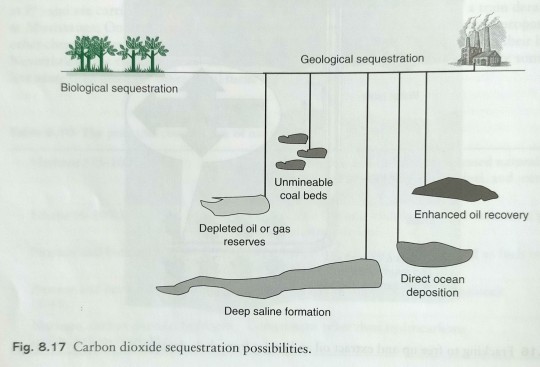
"Environmental Chemistry: A Global Perspective", 4e - Gary W. VanLoon & Stephen J. Duffy
#book quote#environmental chemistry#nonfiction#textbook#carbon dioxide#sequestration#carbon sequestration#mitigation#geology#biology#plants#vegetation#coal#oil#gas#saline#deposition
4 notes
·
View notes